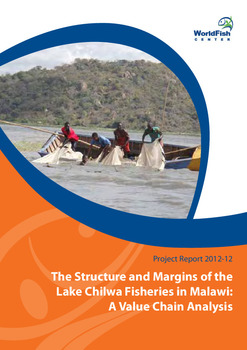The Structure and margins of the Lake Chilwa fisheries in Malawi: a value chain analysis

Citation
Chiwaula, L. et al. (2012). The Structure and margins of the Lake Chilwa fisheries in Malawi: a value chain analysis. Project Report 2012-12. The WorldFish Center. Penang, Malaysia. 34 pp.
Small freshwater pelagic fisheries in closed lakes are very important to millions of people in sub-Saharan Africa providing livelihoods and nutritional security. However, returns from these fisheries have been shown to uctuate in response to climatic variability. In order to understand the impact of these fluctuations on the livelihoods of people dependant on these fisheries, there is a need for information on how the fish value chain is organized and how it functions in response to variation in supplies. The results will feed into strategies that build resilience in fishing households against the uncertainties arising from unstable ecosystems. The Lake Chilwa fishery value chain is composed of fishers, processors, traders, fish transporters, boat owners, owners of fish processing shades, fisheries associations, gear owners, gear makers, firewood sellers, and traders of fishing gear and equipment. The value chain employs many people and local authorities can consider using this information in the design of rural development strategies for employment generation in small-scale fishing communities. The findings from this study have a number of implications for the improvement of the livelihood of fishers and enhancing their capacity to mitigate against the effects of climate change.
Permalink
Date Available
Type
Countries
Copyright
CC BY 4.0
Language